'Superstition swallows everything and examines nothing.':
Tacitus.
Thanks to Dick Osseman for his critically important photos: his website.
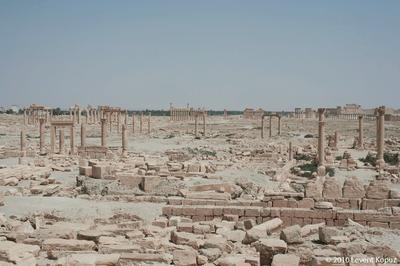
Figure 1: l. korpuz: Not much remains of Palmyra, Syria. It was wiped off the face of the earth, and 'weathering' did not do it.
Looking over the ruins of Palmyra, Syria, what strikes an observer is the almost total lack of ruins. Columns are the most conspicuous remaining feature, but blocks are far too few. A large and wealthy city once existed at this location. Like Petra, Baalbec and Sicily, it was part of a Mediterranean Antecedent civilization. Palmyra entered the historic-time-frame (HTF) in the state of desolation one sees today. Various parts of the ruins are attributed to individuals or historic groups, but these attributions are arbitrary appellations. Everywhere stone exhibits severe plasma erosion dating the ruins beyond HTF. Destruction is so severe that only an appearance of the Z-Pinch Aurora (ZPA) could have perpetrated it. The Pleistocene Catastrophe carried it, the Mega-fauna and much of mankind away. Palmyra is a warning what ZPA can do to cities.
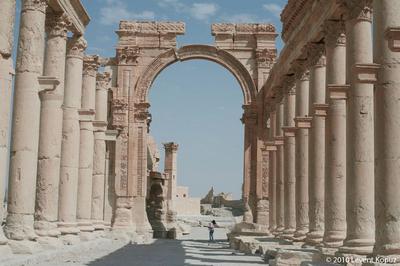
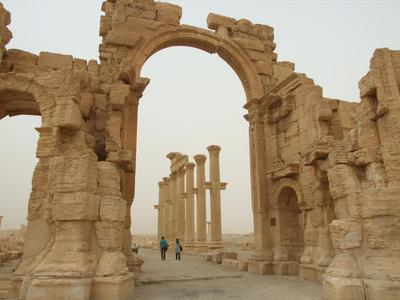
Figure 2: francis: The Jekyll and Hide arch: two sides of the same arch.
The city is the poster child for the vacuity of intellectual inquiry. For example, the two images above are opposite sides of the same arch. In the top image, much decorative detail still can be seen while the bottom one is a picture of devastation. The Roman Emperor Septimius Severus is said to have built it [Wikipedia]. The assertion is nonsense. Romans did not construct arches in the way this was done. The arch consists of split cantilevered blocks sandwiched together to form an arch section. Even more appalling, nothing is said about its bizarre 'Jekyll and Hyde' appearance. One would think this should raise a large flag declaring something has been missed, but the academic shaman grip is unbreakable. The Septimius Severus nonsense flash froze all inquiry.
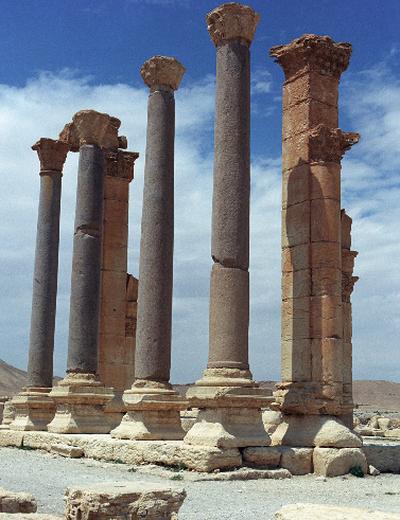
The image at left is the so-called 'Baths of Diocletian'. Very little remains above ground level except these monolithic columns. The ones pictured are Egyptian granite quarried at Aswan. Dimensions of the column shafts are 12.5 x 1.3 meters [Widipedia] which returns a cubic volume of 16.59. At 2750 kg/cubic meter1, the weight of a shaft is about 45,600 kg or 100,000 pounds. The city is over 120mi[190km] from the Mediterranean. No one within HTF could quarry and transport those columns from Egypt to Palmyra. It would not matter how many donkeys, oxen, mules, horses, slaves and peasants were ladled on the task. Only Antecedent Levantines (AnL) had the technology to quarry and transport them. Furthermore, such columns were fragile as indicated by the number of broken shafts at Mons Claudianus and Alexandria Troas.2 Only by using plasma levitation could columns of this size be moved inland from the Mediterranean.
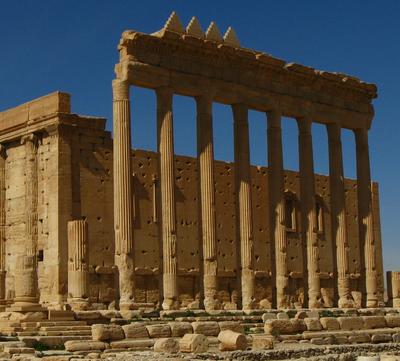
Figure 3: francis: Plasma pitted columns and blocks, and it severely eroded bases.
Whether this building still exists after the ISIS rampage is unknown to the writer. Evidence of plasma damage in Palmyra is pervasive. Some examples are presented. Note the severe erosion on blocks/drums before the steps above. Column bases are equally damaged which probably indicated how so many drums got released among the ruins. Columns were pitted at drum edges and some pits align along the shaft. The same pits can be seen among blocks in the background. The pitting mostly occurred at the corners of blocks. Note the shark-tooth crenelations on top of the entablature. These are found at Petra, Persepolis and Pasargadae. It is possible those at the last two locations were decorative copies and not an indication of structural reuse. However, the very large block size at these locations indicate otherwise.
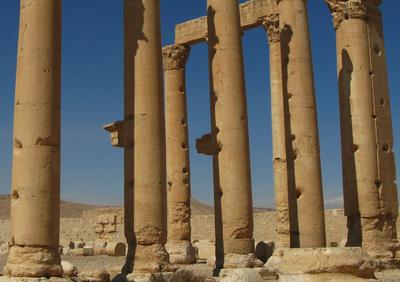
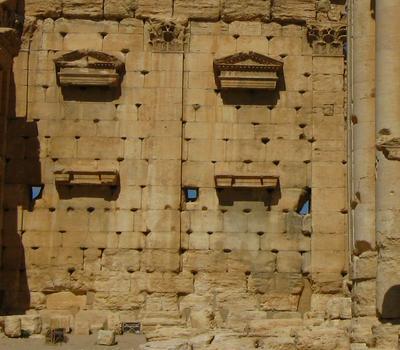
Figure 4: francis: The pitting on columns and blocks dates them before the Pleistocene Catastrophe.
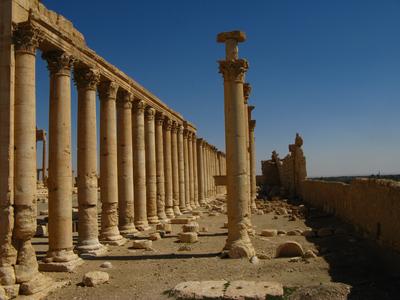
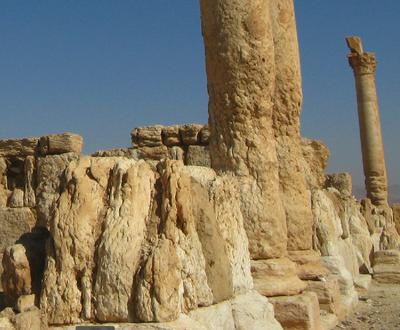
Figure 5: francis: Plasma attacked both top and bottom of these structures.
In the above images, plasma eroded the top and base of the columns. The ZPA attracts earth's plasma to the surface rock. Looking down the length of columns in 5A, it is evident the entablature bore the brunt of plasma energy. The architrave and a small bit of frieze remain, but the cornice is gone. The damage was coerced into the 'weathering' narrative.
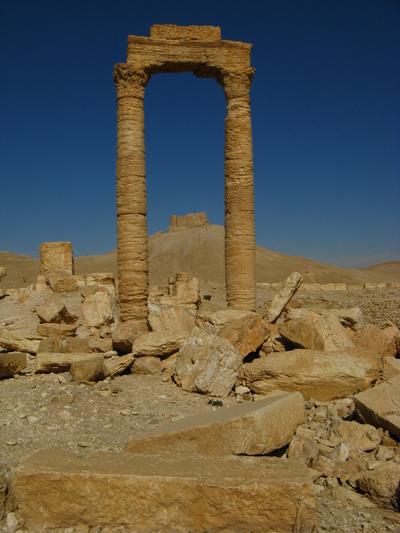
The columns at the left are unique among images from Palmyra, while
severely eroded, they remain upright. A plasma connection passed through
them. Eroded blocks surround the base. Only a portion of the frieze and
architrave remain while column neighbors were planed off. No one knows
how plasma behaves during an appearance of a ZPA except that intense
electrical activity occurs. At Palmyra, Antecedent architecture was
wrecked, but the landscape was not ripped up as happened on Sardinia.
These columns should be the poster child of Palmyra's destruction.
One of the catchall explanations for ruins is an earthquake. Yet, many
single and small groups of columns are seen in images, some with blocks
sitting precariously atop, belie the impression of quakes destructive
power. As has been stated, 'The earthquake response of single and multi
drum columns is a complicated, highly non-linear structural problem.'3 For all their precarious appearance,
columns are rather stable structures. Otherwise, humans would not have
used them.
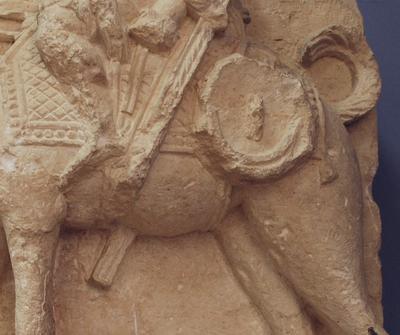

Figure 6: t.myrup,dosseman: Palmyrene camels with curly tails.
The images above are reliefs of camels from Palmyra. An internet search found no images of camels matching these animals distinctive curly tails. Nor were images found having a feather extending from the base of tail to tip. Apparently this breed of camel does not exist anymore. Being included in reliefs may indicate this animal was an elite breed of camel. If that was the case, their populations were probably small and not widespread enough to survive the PC. A plasma eroded relief of a camel and merchant was found at Petra. These reliefs sustain the assertion camels and other farm animals were domesticated prior to the PC.

Figure 7: dosseman: The Temple of Apollo at Didyma. The gap in this north side wall was cut either by quarry activity or by a plasma event. Quarrying does not make sense because the amount of marble lying around the perimeter is considerable and closer at hand. Also chips created by stone breaking are missing. See: https://pbase.com/dosseman/didymaapollo

Figure 8: dosseman: The Temple of Apollo at Didyma. It is surrounded by a very large debris field whose only creative source was plasma levitation. Columns show the destructive effect of plasma erosion. The building was pulled apart. The levitating property was as sharply focused as plasma.
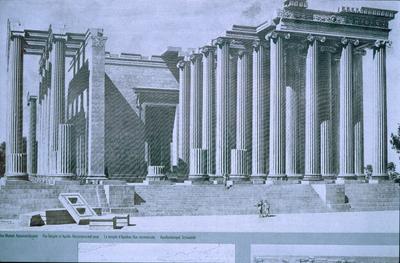
Figure 9: dosseman: Reconstruction of The Temple of Apollo at Didyma. It was a monumental building typical of Antecedent construction like those in Petra, Egypt and Baalbek. It was not built by stoop-labor.
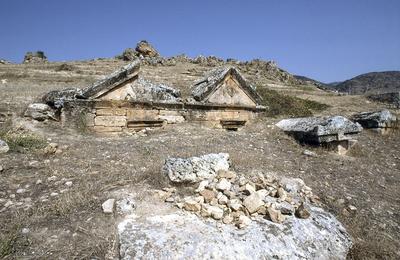
Figure 10: dosseman: AnL Hierapolis tombs buried under a blanket of colluvium. This image is the smoking gun. A plasma connection is the only explanation for generating enough colluvium to bury these tombs. Careful excavation could determine the number of plasma events it took to cover them.
Cultures used building materials that could be comfortably controlled. Romans constructed buildings using brick and concrete with a veneer of marble. Pliny states, marble slabs were cut with iron saws using sand as an abrasive. Huge amounts of sand imported from Ethiopia were required for this. In the early twentieth century using this method of cutting proceeded at one to two inches per hour. The amount of sand required was equivalent to the block being cut4. Researchers have not reported sand at quarries associated with building the Temple of Apollo, fig.9, only vast windrows of stone chips. Furthermore, water was a requirement for using sand, and the area was reported as lacking it.5 Water was necessary to flush sand into the cut. Antecedents used heavy stone blocks because they had the means to easily manipulate them without resorting to manual processes Ancients had to use.
The Pleistocene Catastrophe erased Palmyra destroying Antecedent culture, economy and technology. J. L. Giddings found the forest at Engineer Creek, Alaska shredded three times in 307 years. The same type of event occurred when the tombs, fig.10, were buried. Palmyra experienced a planing event where most surface structures were planed off. AnL, like AnE (Antecedent Egyptians), may have survived the first encounters, but succumbed to later events. The reset turned surviving Palmyrenes into tillers of the soil. It was a fearsome shock to suddenly go from a cultured to a stone-age existence. Population crashed. Famine would have accompanied the reset since every sector of AnL economy was devastated. For the peasant class, if fields were not buried under a layer of coarse colluvium and next year's seeds were unharmed, maybe recovery was quicker. That class probably never moved too far above the Stone Age anyway. This entire catastrophic episode has been smothered under the apotheosis of superstition to 'fact', religionized archaeology6 and a nauseating lack of courage. The ZPA are coming back. If the preeminence of superstition continues, a day will come when tomorrow will be catastrophically different from yesterday.
https://www.usna.edu/Users/math/meh/pyr.pdf↩︎
Antique quarries of marmor troadense (NW Turkey):insights from field mapping and absolute dating, Turkish Journal of Earth Sciences, Enver Vural YAVUZ, Article, 01.09.2014.↩︎
THE COLLAPSE OF THE ANCIENT TEMPLE OF ZEUS AT OLYMPIA REVISITED, ALEXANDRIS, Argyris, et al, Researchgate,2016.↩︎
The Roman Empire and the Indian Ocean,Raoul McLaughlin; Pen & Sword Books Ltd, 2014, p 109↩︎
YAVUZ, article.↩︎
Nearly all research is defined within a religious context.↩︎

